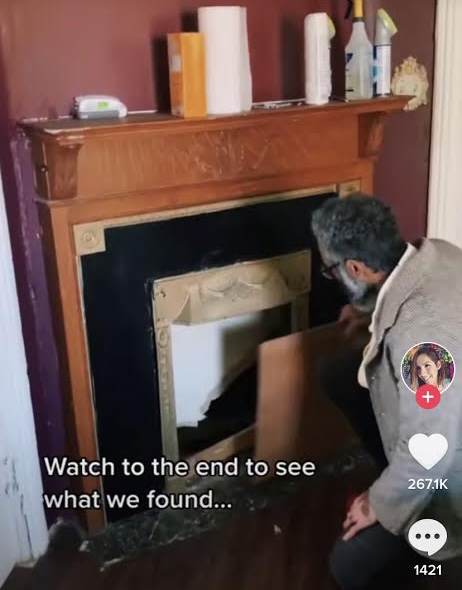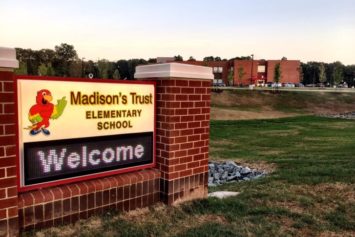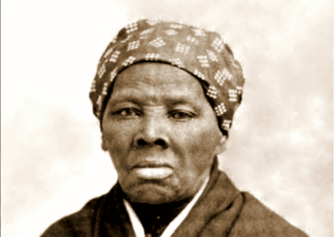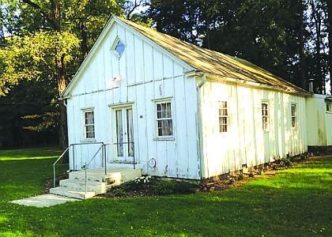Questions are plenty after an Ohio couple discovered a hidden passageway behind a fireplace in their 162-year-old home.
Husband-and-wife team Ariel and Otelia Vergez purchased the Cleveland 1859 build without ever setting foot inside the house. But since becoming the new owners of the Victorian-style home in April, the couple and their five children have made countless discoveries. The latest is finding that a fireplace was concealing a passageway that leads to the attic.

Otelia Vergez shared the discovery last month on TikTok, where she and others questioned if the hideout was used during Prohibition or as a part of the Underground Railroad. “We have four fireplaces in this house, but only two of them work, the other two are not even connected to any type of chimney so this is us trying to figure out what the heck is going on with this one,” says Otelia in the video.
Her husband is then seen clearing the fireplace, where they discover a crawl space big enough for a person to climb into. Otelia adds that her neighborhood — located in the Detroit Shoreway area of Cleveland — is “notorious for having homes that were part of the Underground Railroad.”
While it is not impossible that the hidden passageway could have been used to help escaped enslaved people en route to refuge in Canada, some commenters believe it is more plausible past owners used the space to hide alcohol. “This looks more prohibition era hiding spot. People using the railroad would have to have places to hide for hours comfortably,” wrote one person.
The elaborate system of homes and businesses used to hide runaway enslaved people operated between roughly 1800 until the end of the Civil War in 1865. Prohibition — the nationwide constitutional ban on the sale and production of alcoholic beverages — was the law of the land from Jan. 17, 1920, through Dec. 5, 1933.
“I hope it is part of the UGR. What a beautiful pieces of history to have.”
Otelia also hopes her home served as a safe haven, citing that other homes in the area were registered as being apart of the system.
“That’s a big reason why we think it could be. Lots of history here,” she wrote in response to a suggestion to look into the history of surrounding homes.
“It’s like the good version of the house from Get Out” and “Freedom and alcohol. I am HERE for this!!” wrote others.
In a second video, Otelia highlights an article detailing how William J. Gordon owned the property before the home was built. The wholesale grocer was also known for having a labyrinth of underground tunnels and secret stairways on his homestead located on W. 9th Street. Otelia believes that if Gordon played a role in the home’s construction it may explain a lot about their discoveries.
“The tunnels actually led down into the Cuyahoga River, which would have been created easy access for in and out stuff,” she says. “Considering we found bricks under the grass, anything is possible!”


